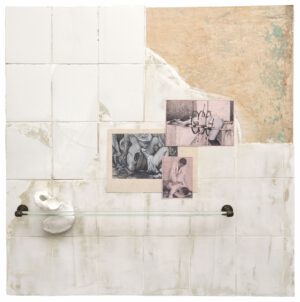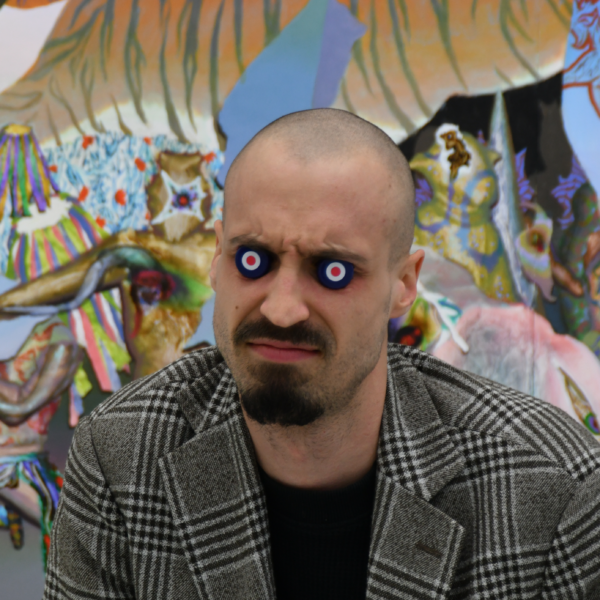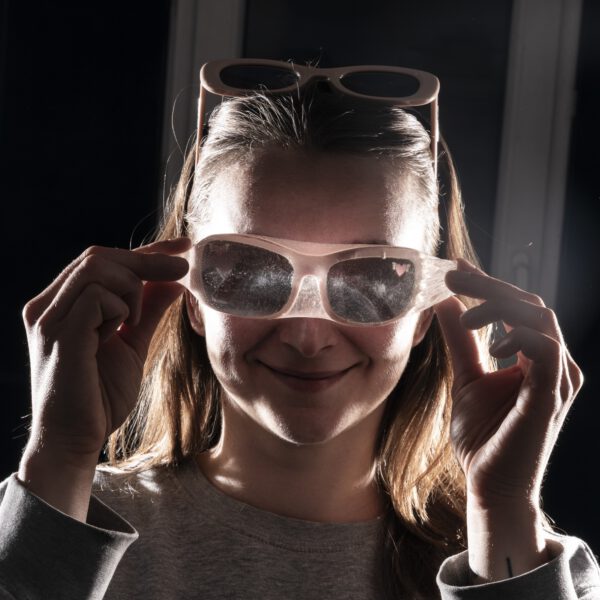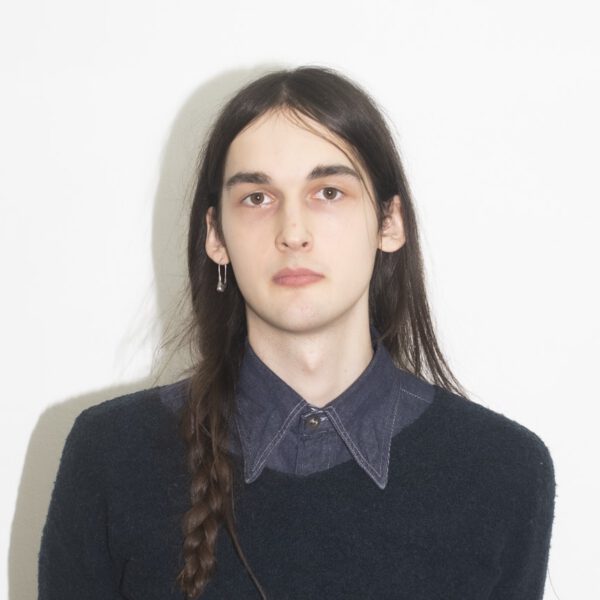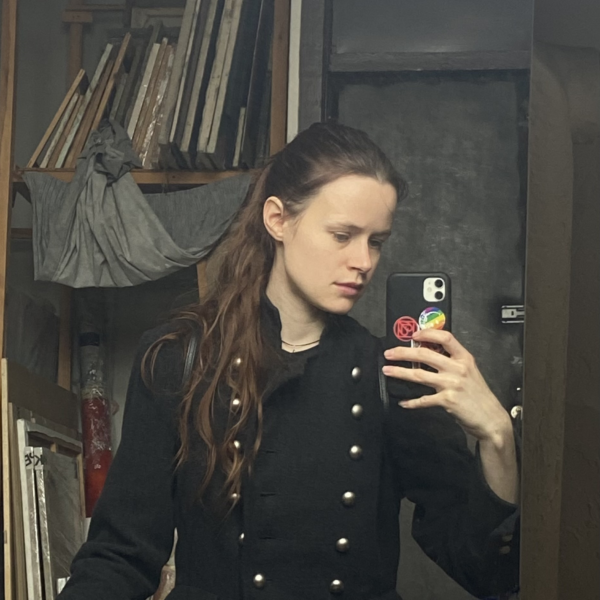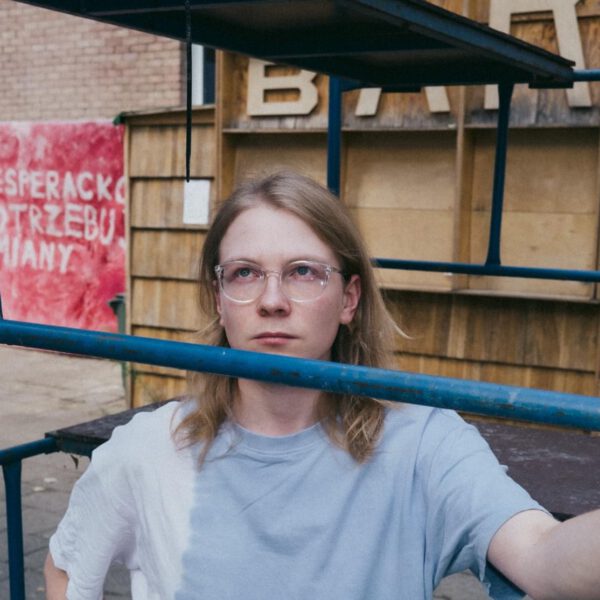Filip Rybkowski (1991) is a Polish visual artist using in his practice the critical act of reconstruction combined with reflection on the political nature of gestures of restoration, reproduction and conservation. His works transcend the traditional boundaries of painting, entering the field of mosaic, objet trouvé and installation.
Rybkowski combines the poetics of the fragment with the iconographic context, juxtaposing original artifacts and reconstructions with image-quotes. He is interested in the problematic status of authenticity and the processes of historical construction of memory. His most recent works feature the motif of the body, understood both as a direct reference to human anatomy and as a metaphor for the physicality of the image. In these works Rybkowski focuses on the issue of orders, canon and norms, and their control as mechanisms of power that enable the formation and bending of the collective, social and political “body”.
Three works from with displacement series
The aforementioned displacement can be referred both to the paradoxical features of the human body, its fragility but also plasticity (fracture with displacement), and to the functioning of images. These similarly erode with time, allow themselves to be fragmented, their original context become blurred, and they undergo displacement.
In the paintings titled Bones reconstruction I and Bones reconstruction II, the reference to human anatomy becomes a pretext for considering the essence of reconstruction and its potential. Possible here only through a preceding destructive event.
The posture study balances stability and lability, care and oppression, sense of security and danger. The study of posture, referring to body posture and the possibility of its correction, tells about the issue of moral, social or political posture.
- Posture study
Filip Rybkowski (ur. 1991) – polski artysta wizualny łączący w swojej twórczości krytyczny akt rekonstrukcji z refleksją nad politycznym charakterem restauracji, reprodukcji i konserwacji. Jego prace wykraczają poza tradycyjnie rozumiane granice malarstwa, wzbogacając je o elementy mozaiki, objet trouvé i instalacji.
Rybkowski łączy poetycki charakter wybranego fragmentu z kontekstem ikonograficznym, zestawiając oryginalne artefakty lub ich rekonstrukcje z cytatami z obrazów. Interesuje się problematycznym statusem autentyczności oraz procesami historycznego konstruowania pamięci. W jego najnowszych realizacjach pojawia się motyw ciała, rozumiany zarówno jako bezpośrednie odniesienie do ludzkiej anatomii, jak i metafora fizyczności obrazu. W tych pracach Rybkowski skupia się na kwestii nakazów, kanonów, norm i ich kontroli jako mechanizmów władzy umożliwiających formowanie i naginanie zbiorowego, społecznego i politycznego „ciała”.
Trzy prace z serii z przemieszczeniem
Tytułowe „przemieszczenie” może odnosić się zarówno do paradoksalnych cech ludzkiego ciała – jego równoczesnej kruchości i plastyczności („złamanie z przemieszczeniem”), jak i do sposobu funkcjonowania obrazów, które z czasem ulegają erozji i fragmentaryzacji, a ich pierwotny kontekst zaciera się lub zmienia miejsce.
W obrazach pt. Rekonstrukcja kości I oraz Rekonstrukcja kości II nawiązanie do ludzkiej anatomii staje się pretekstem do rozważań nad istotą rekonstrukcji i jej potencjałem. W tym przypadku jest ona możliwa wyłącznie dzięki wcześniejszemu zaistnieniu destrukcyjnego wydarzenia.
Studium postawy balansuje między stabilnością a chwiejnością, troską a opresją, poczuciem bezpieczeństwa a zagrożeniem. Choć praca odnosi się do postawy ciała i możliwości jej korekty, można ją również postrzegać w kontekście postawy moralnej, społecznej czy politycznej.
- Posture study








